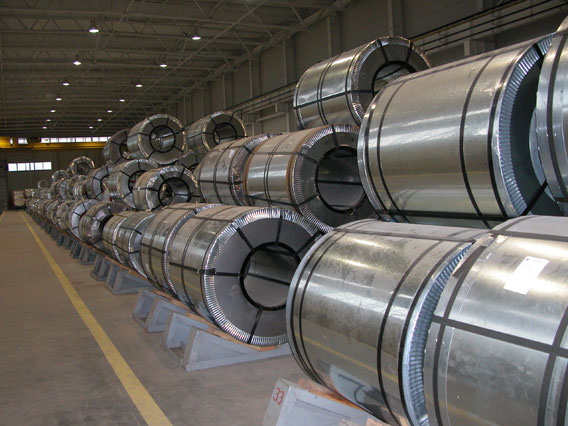
Scrap iron collected from farmers utilized as a part of the Statue of Unity
October 4, 2016
Indsur Global- Foundry Industry, puts Rs. 150-cr Plan on Hold
October 17, 2016There are such a variety of steel out there, making up different shapes, grades, specifications, finishes and other preparing considerations. One key refinement among prefabricated steel items is the distinction between hot rolled versus cold rolled steel.
Why the difference?
It might appear glaringly evident, however a few sorts of steel are more qualified for specific applications. Knowing which to utilize can abstain from spending more than you need to on raw materials. It can likewise spare you time and cash on extra handling. At the end of the day, this guide will help you stay away from confusions and accomplish better results—at the most ideal cost.
Hot rolled steel
Hot moved steel is roll-squeezed at high temperatures—more than 1,700˚F, which is over the re-crystallization temperature for generally steels. This makes the steel easier to shape furthermore and brings about items that are simpler to work with.
To handle hot moved steel, manufacturers first begin with a substantial, rectangular billet. The billet is heated and after that sent for pre-processing, where it is smoothed into a vast roll. From that point, it is kept at a high temperature and goes through a progression of rollers to accomplish its finishing specifications. Picture sparkling, white-hot strands of steel going through pressure rollers at fast. For sheet metal, rolled steel is spun into coils and left to cool. For different structures, for example, bars or plates, materials are sectioned and packaged.
Steel recoils somewhat as it cools. Since hot rolled steel is cooled subsequent to processing, there is less control over its shape, making it less reasonable for precise applications. Hot rolled steel is regularly utilized where minutely particular measurements aren’t essential. Railroad tracks and construction projects frequently utilize hot rolled steel.
Hot moved steel can frequently be recognized by these attributes:
- A scaled surface—a leftover of cooling from extreme temperatures
- Slightly round edges and corners for bar & plate items (because of shrinkage and not percise finishing)
- Slight mutilations, where cooling may bring about marginally trapezoidal structures—instead of impeccably squared edges.
What are the advantages of hot rolled steel? It commonly requires considerably less processing than icy moved steel, which makes it a great deal less expensive. Since hot rolled steel is permitted to cool at room temperature, it’s basically standardized—which means it’s free from internal stresses that can emerge from quenching or work-solidifying forms.
Hot rolled steel is perfect where dimensional resistances aren’t as critical as general material strength, and where surface finish isn’t a key concern. Where surface finish is a point to worry about, scaling can be evacuated by grinding, sand blasting or acid-bath pickling. When scaling has been evacuated, different brush or mirror finishes can likewise be applied. Descaled steel likewise offers a superior surface for painting and other surface coatings.
Cold rolled steel
Cool rolled steel is basically hot moved steel that has been processed further. Once hot moved steel has cooled, it is then moved to accomplish more correct measurements and better surface qualities.
Icy “rolled” steel is regularly used to portray a scope of finishing processes—however, actually, “cold rolled” applies just to sheets that undergo compression between rollers. Things like bars or tubes are “drawn,” not rolled. Other cold finishing procedures incorporate turning, grinding and cleaning—each of which is utilized to adjust existing hot rolled stock into more refined items.
Cold rolled steel can frequently be recognized by these attributes:
- Better, more finished surfaces with closer tolerances
- Smooth surfaces that are often slick to the touch
- Bars are valid & square, and regularly have well-defined edges and corners
- Tubes have better concentric consistency & straightness
With preferred surface attributes over hot rolled steel, it’s nothing unexpected that cool rolled steel is frequently utilized for technically precise apps or where feel are critical. Be that as it may, because of the extra processing for cool finished items, they come at a higher cost.
As far as their physical attributes are considered, cold worked steels are commonly harder and stronger than standard hot rolled steels. This is on the grounds that cold finishing basically makes a work-hardened item. It’s significant that these extra treatments can likewise make internal stresses inside the material. At the end of the day, while creating cold-worked steel—whether cutting, pounding or welding it—this can release tensions and prompt eccentric twisting.


